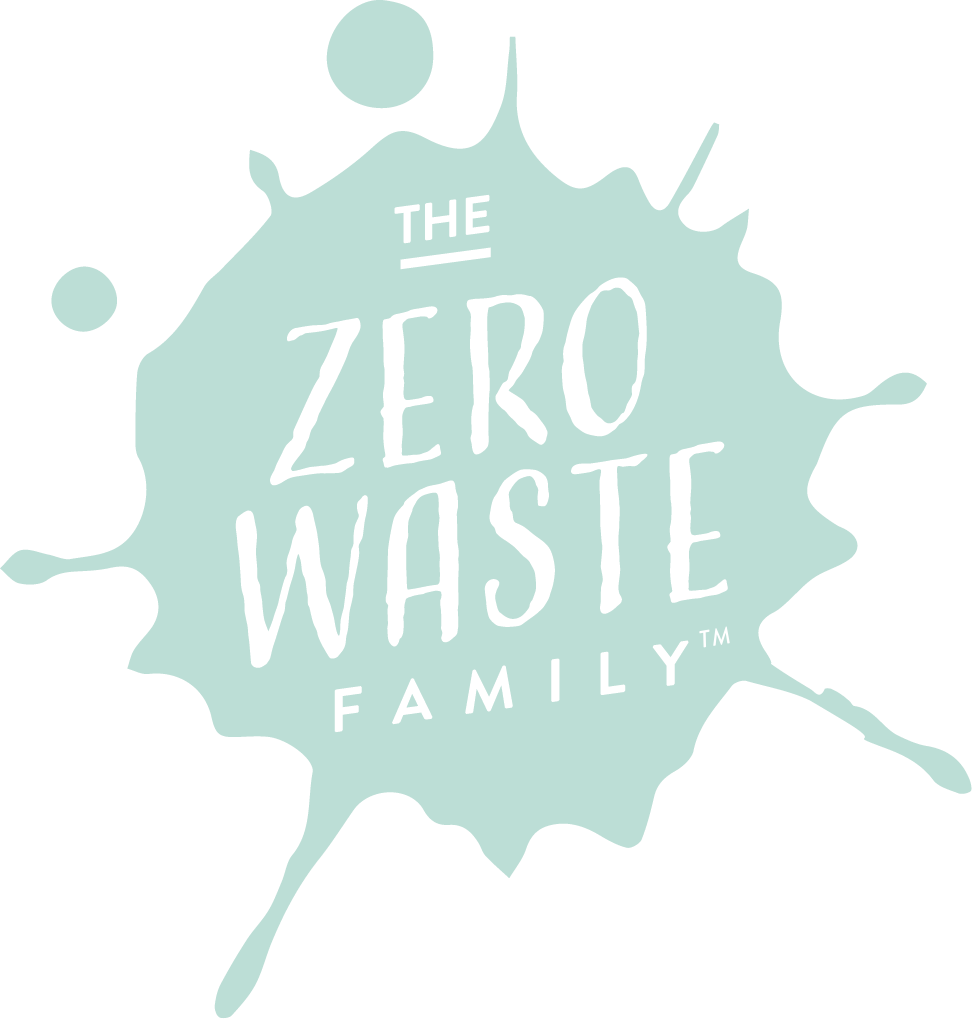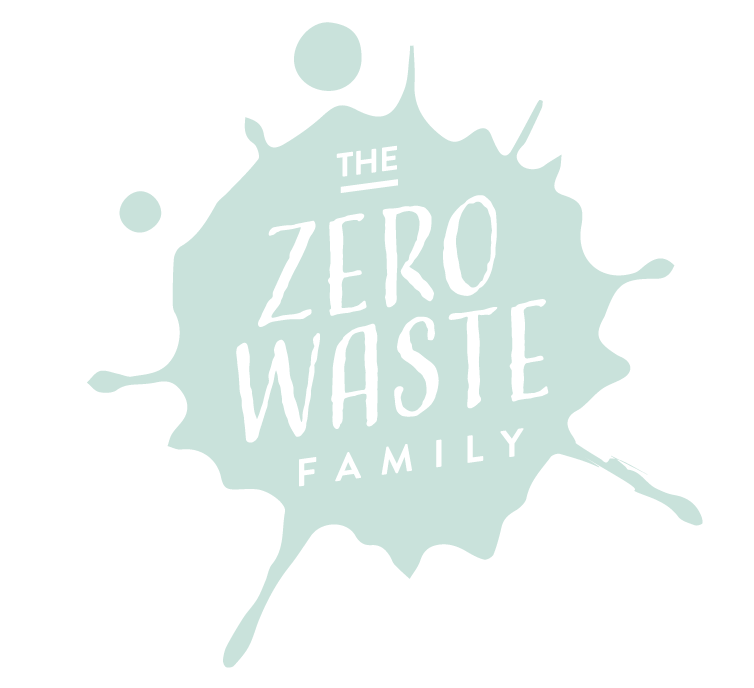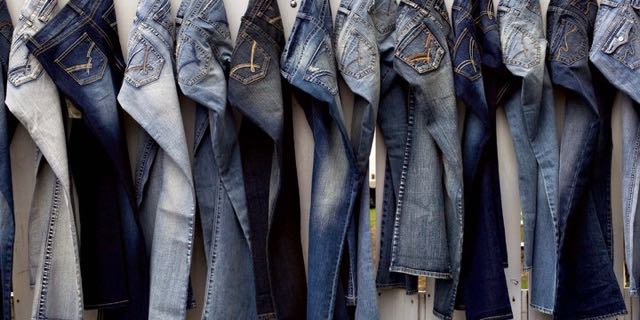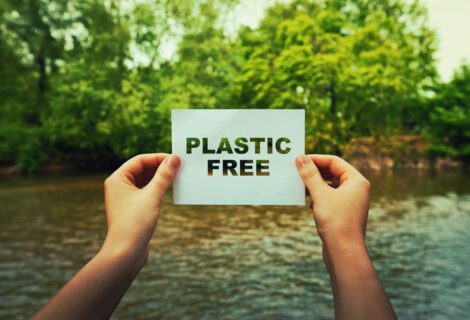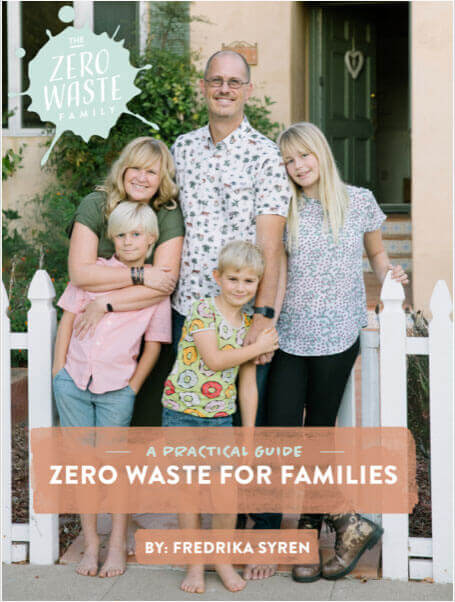By Fredrica Syren:
This last summer my husband had two of his denim Levis jeans rip and become unwearable. And my kids, well, they go through jeans as if they were being dragged on the ground all day long. Of course I try to patch and repair as best as I can to extend their life a wee bit longer, but ultimately the jeans’ days are numbered. Then the question is “what do you do with old jeans?”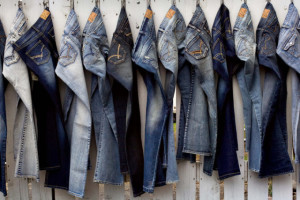
Throwing jeans into the trash, which will land them in a landfill, should never be an option: it’s not new news that all over the world landfills are filling up too fast, and causing immense damage to our planet and the environment as well to the health of humans and wildlife. In the U.S. alone, about 11.1 million tons of textiles such as t-shirts, pants, blankets, tablecloths, sheets and baby clothes are thrown into the trash and then into landfills each year. The big problem is that we’re running out of landfill space, so we reallyneed to learn to live by the 3Rs to reduce our consumption, reusethings more and recycle to prevent items from going to the landfill at all.
Unfortunately, the damage to our environment because of landfillsis not the only problem. The production of new textiles is a huge problem for the environment because it causes lots of pollution and uses lots of valuable resources that we’re running short of. For example, with droughts plaguing so many places all over the world, it’s a sad fact that textile production is one of the most unknown water hogs. First of all, growing textile materials requirestons of water. Second, lots of water is used in the dye process. For example, making one pair of stonewashed jeans requires 500 gallons of water. On top of this, cotton (the raw material for denimclothing) relies heavily on pesticides that enter the soil and water,and pollute our planet.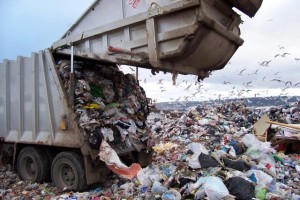
Sturdy and long-lasting, denim is a comfortable and widely used fabric best known as the material used for blue jeans and workers’ coveralls, shirts and other garments. Most of us own at least one denim garment (usually more), so for ecologically sensitive consumers, it’s important to know how denim can be recycled.
So, how can denim jeans be recycled?
Blue jeans go green—This program collects denim across the country and recycles the worn fabric into insulation. The Blue Jeans Go Green program keeps textile waste out of landfills and helps with building efforts in communities around the country.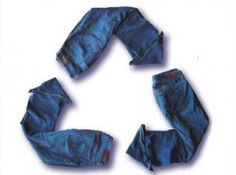
San Francisco-based Levi Strauss & Co., who really make an effort to recycle old textiles, announced recently that they would offer a $10 voucher to customers who drop off a clean, dry item of clothing or a pair of shoes at its stores. The voucher can be used in any U.S. Levi’s store (outlets included) toward the purchase ofregular-priced, in-store Levi’s.
Donate them to Goodwill.
Other ways you can recycle your old denim is by making something new from them. Here are some fun ideas:
 Shorts—Simples way to upcycle old denim is by cutting the legs off and making cute shorts.
Shorts—Simples way to upcycle old denim is by cutting the legs off and making cute shorts. 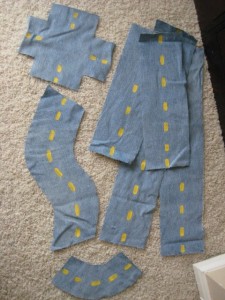 Toy road
Toy road 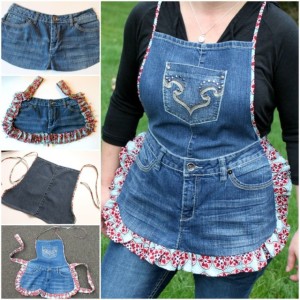 Apron
Apron  Purse
Purse 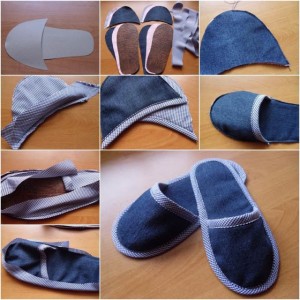 Slippers
Slippers
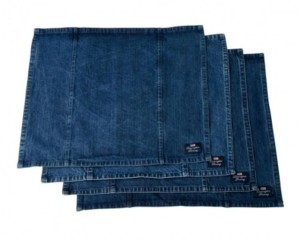 Placemats
Placemats
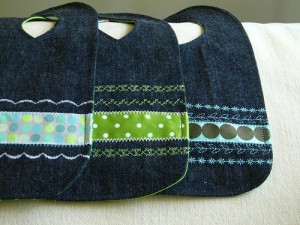 Baby bib
Baby bib
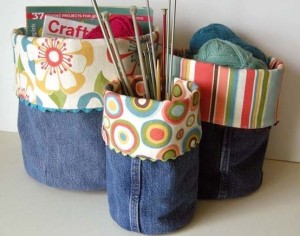 Storage bins
Storage bins
Reusing and recycling old items like fabrics, denim jeans included, prevents them from going into the landfill, and is a great way to reduce the use of raw materials and energy; and to reduce air pollution, water pollution, waste and greenhouse emissions. So, the next time you have old or ripped denim jeans, take a moment to consider whether you can upcycle, donate or recycle them instead of send them to a landfill. Always remember that someone’s trash is someone else’s treasure.
